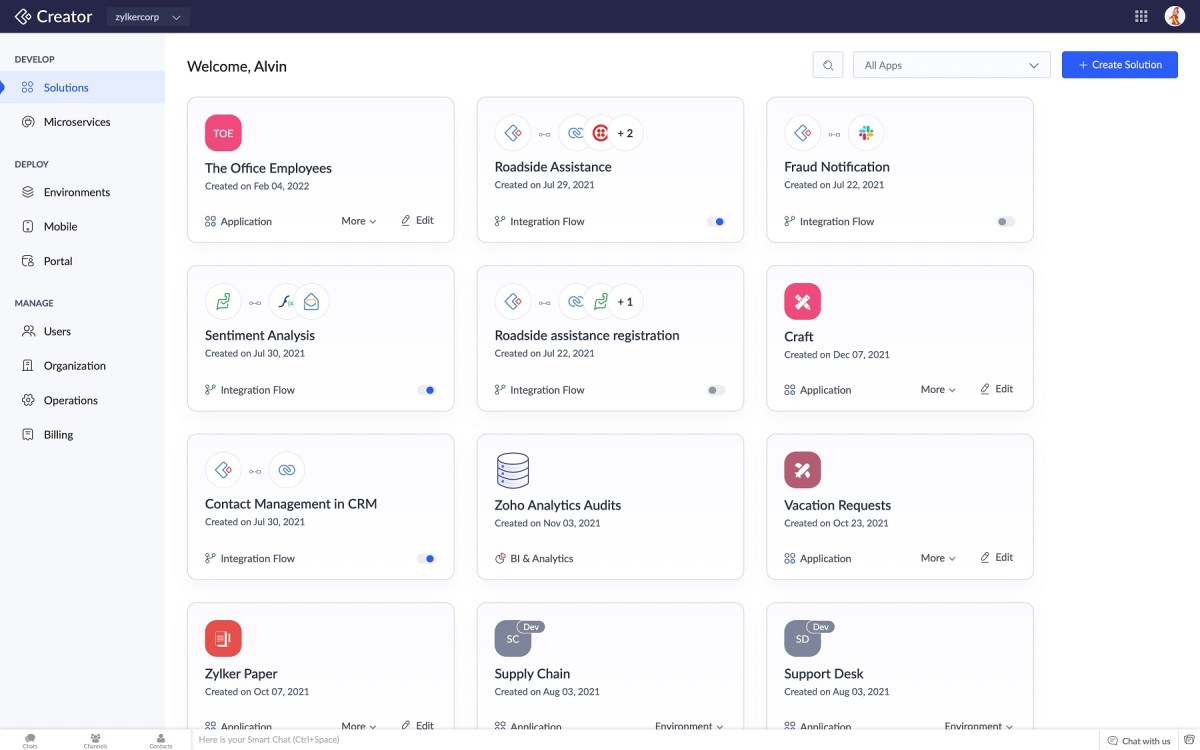Leading global technology company, Zoho Corporation has unveiled the latest version of its low-code offering, Zoho Creator Platform, an all-in-one solution that bridges the gap between business users and IT teams by providing a low-code solution-building experience regardless of technical know-how.
Existing low-code platforms for business users only facilitate basic app building, lacking the sophistication needed to develop scalable, enterprise-ready end-to-end tools. Zoho Creator Platform supports all levels to build, manage, integrate, and analyse for a complete low-code experience, enabling 10 times faster deployment than any other solution on the market.
Currently there isn’t a low-code solution on the market that allows both business users and IT to truly build end to end business solutions, according to Zoho Corporation chief evangelist, Raju Vegesna.
“With this update, Zoho’s Creator Platform combines application development, integrations, process automation, business intelligence and analytics into one single platform while simultaneously enabling IT teams to effortlessly manage security, compliance, and governance challenges. Now, organisations can leverage a unified solution for all of their low-code needs, extending the ability to innovate to every employee,” he said.
Key areas of innovation in the new Creator Platform include:
Unified Solution Builder – Create, integrate, analyse, and manage custom business solutions at scale from a single dashboard. Seamlessly switch between different elements, with deep interoperability between capabilities, and in-built guardrails for IT teams to drive enterprise-wide citizen development programs.
Artificial Intelligence (AI) – Zoho’s intelligent AI assistant (Zia) now enables developers to import data from anywhere, cleanse and transform with one click, build data models, and automatically detect data relationships via Smart Import. AI tasks such as predictive analytics, keyword extraction, sentiment analysis, OCR, and object detection are built into the drag-and-drop user interface for easy deployment.
Process Blueprinting – This intuitive drag-and-drop builder graphically constructs an online replica of a business process by specifying each step, assigning responsibilities across stakeholders, and automating actions based on pre-set conditions.
Enhanced Serverless Functions – Developers can now write, store, and execute reusable code blocks in Zoho Creator Platform using Deluge, Java, or Node.js. These functions encourage IT and business teams to work together to build scalable and easily maintainable enterprise-ready apps faster.
Unified Data Modelling (UDM) – Unchecked data points, varied data formats, and evolving app landscapes add layers of difficult-to-solve complexities to data integration, resulting in sub-optimal business results. Universal cloud modelling is now included to help developers establish secure data transfer by automating data integration protocols with unified data architecture and over 600 plug-and-play connectors to make data integration easier for users.
Integration Status Dashboard – Users have complete visibility on how well each integration operates with the new Integration Status Dashboard. Status Dashboard provides key findings on recent executions, success and failure stats, and top connections facilitating early error detection and resolution to enable organisations to discover errors and resolve them quicker.
Embedded BI and Analytics Engine – An industry-first, full-fledged business intelligence and analytics engine is now included in the Zoho Creator Platform, enabling users to derive business insights from the data residing in their applications without worrying about bringing another subscription into the fold. High-end BI functionalities like predictive analytics, data alerts, what-if analysis, data blending, and conversational analytics are all now supported on the low-code platform.
Environments – Developers can now launch solutions in different environments of choice—development, staging (testing), or production—with a single click based on the readiness of the solution. This allows users to add features continuously or make changes without disturbing the existing app in production. The environments also support role-based access to help business developers simulate user-specific experience validation.
Centralised Governance – To help IT manage low-code development, features such as granular role-based access controls, comprehensive audit trails and backup options, application IDE, dashboards to view and manage users, billing dashboard, personalisation options such as localisation, branding customisation, and more, are now available in the low-code platform.
Integrated Communication and Collaboration Aid – Often, business developers get stuck in the build phase with minor obstacles, especially when new to the platform. To enhance communication and collaboration, integrated communication enables messaging, sending files, sharing screens, and the ability to make audio and video calls.

